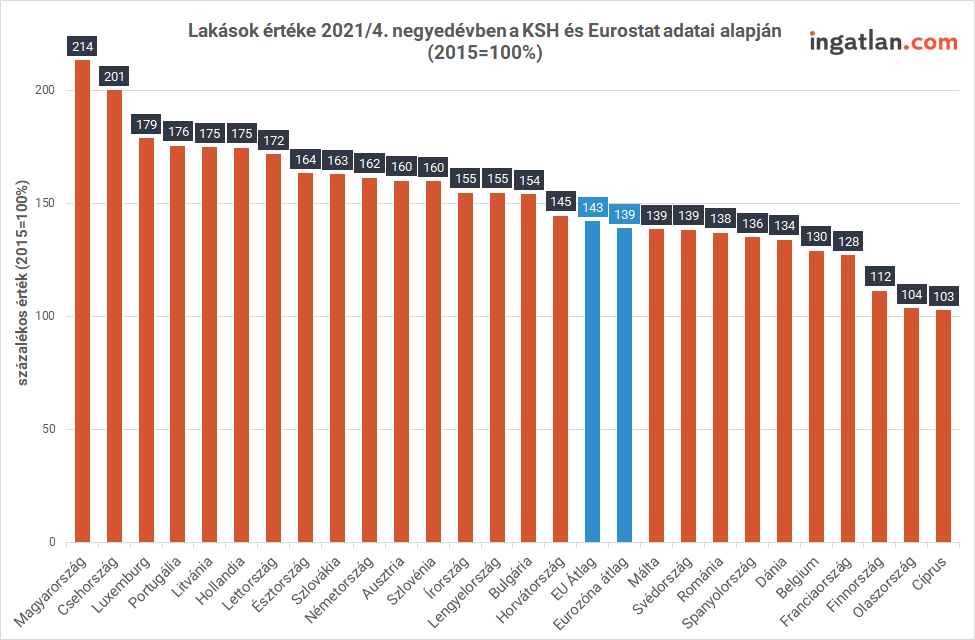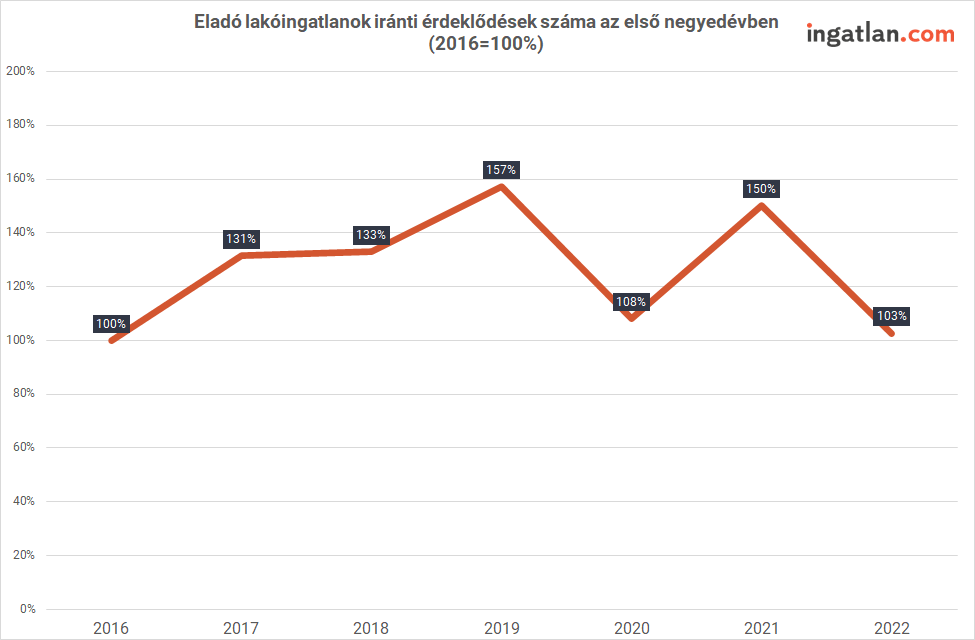House prices in Hungary have doubled in the last seven years
EnglishThe Hungarian housing market is undergoing significant changes and is among the leaders in terms of long-term price increases in international comparison, according to the latest study by ingatlan.com, presenting the current demand and the latest asking prices, as well as last year's official price indices.
- The preliminary official price index for second-hand housing showed a 20 percent rise at national level in the last quarter of last year, mainly due to the rise in the price of residential real estate in cheaper locations.
- According to data from the Central Statistical Office (KSH) and Eurostat, housing prices in Hungary were 2.1 times higher at the end of last year than in 2015, which was the highest rise in EU countries.
- This year's data show that the demand in the housing market is being held back by the rise in mortgage rates. In the first quarter of this year, the demand for homes for sale was lower than two years ago, even though the first quarter of 2020 was already affected by the coronavirus epidemic.
- The market is expected to split into two parts, with new residential property prices rising faster than second-hand housing, partly due to labour shortages and rising building material costs.
- The latest supply market prices show that the average price per square metre of new homes in Budapest at the beginning of April was 1.1 million forints, and it was 873,000 forints for second-hand homes. In other large cities, the price of new flats was 736,000 forints per m2, while that of second-hand flats was 523,000.
What drives prices up?
The average price of new and second-hand housing in Hungary rose by 19.5 percent in the last quarter of 2021, an increase unseen since the second quarter of 2019. Chief economic expert at ingatlan.com László Balogh explained that
Based on the so-called composition effect, the main driver of the rise was the price increase of residential properties in settlements with typically lower house prices. This is essentially an obvious trend: buyers move from more expensive areas to cheaper ones.
He also said that
according to the latest data from Eurostat, the EU's statistical office, published for the last quarter of 2021, the biggest rise in house prices was seen in Hungary in the EU in the last 7 years.
In the last quarter of 2021, the average price paid for homes in Hungary was 2.1 times higher than in 2015, with the Czech Republic in second place with a 2-fold increase. Luxembourg came third, with 1.8 times more to be paid for residential properties than in 2015.

Value of homes in Q4 2021 based on KSH and Eurostat data (2015=100%)
Used and new housing market could split
László Balogh, presenting the latest data from this year's study by ingatlan.com, said
“The housing market is changing. This is indicated by a significant drop in demand for homes for sale this year, which can be explained primarily by the rising interest rate environment due to inflation, i.e. rising mortgage costs. In the first quarter of this year, there was less interest in properties for sale than two years ago, although the first quarter of 2020 was already affected by the coronavirus epidemic.

Interest in residential properties for sale in Q1 2022 (2016=100%)
The expert believes that the market for new and second-hand housing may split in the coming period.
In the case of new residential properties, external factors that are independent of demand, such as labour shortages and rising costs of building materials, are driving up prices.
Therefore, in the new residential property market, the question will not be the rate of price increases, but whether buyers will be willing to buy homes at these price levels. If there is insufficient demand, investors will rather decide not to build these homes at all.
The survey of ingatlan.com shows that in the first days of April, the average price per square metre of new apartments on the market was nearly 1.1 million forints in the capital, which is 21 percent higher than a year earlier. For second-hand homes in Budapest the increase was 17 percent, reaching 873.000 forints per m2. In other big cities, the average price per square metre for new housing was 736,000, a 26 percent annual increase, while the average price of second-hand housing rose by 28 percent to 522,000 forints.
